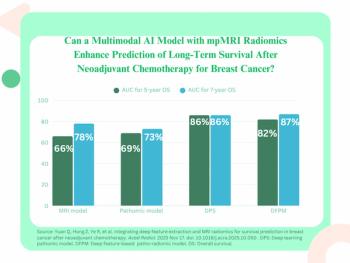
If CT stumbles, blame Mom
Just as Old Faithful will gush like clockwork every hour on the hour, CT procedure volumes will grow year after year-or so I thought.
Just as Old Faithful will gush like clockwork every hour on the hour, CT procedure volumes will grow year after year--or so I thought.
Earlier this month, the Discovery Channel burst my bubble about Old Faithful, noting that the timing, length, and height of its eruptions vary from day to day, year to year. A scant few days after this geothermal epiphany, while attending the Stanford MDCT conference in Las Vegas, I learned that CT may have lost a step in its growth.
"In the last six months we have seen a decrease in the number of CTs at our institution," Dr. Matthew Bassignani told me during a break in the conference sessions. "At this meeting, I've heard that Yale, Massachusetts General Hospital, and NYU have seen drops as well."
It was then that Bassignani, an associate professor of radiology at the University of Virginia and medical director of UVA Imaging Centers, made a bold prediction: MR will resolve the technical issues that currently give CT an edge and, in the next 10 years, will become the preeminent imaging modality.
"CT clearly won't go away," he said.
Certain patients still won't go into a magnet, he explained. And there will be others, such as trauma patients, who will be better served by CT than MR.
"But it is my prediction that MR will become more important than CT," he said.
Underlying his prediction, Bassignani cited the reliance of CT on ionizing radiation. Europeans sounded the alarm several years ago about x-ray exposure from CT. Their concerns became ours. Since then, the lay press has jumped on the issue, which now appears to have filtered through the referring physician and patient communities.
Recent engineering efforts by each of the major vendors have dramatically cut dose in cardiovascular CT. Other developments promise similar cuts in CT dose for exams elsewhere in the body. But the damage to the reputation of CT has been done and the modality appears to be stumbling.
The "mom argument" may be why.
"If it was my mom, and she needed a CT scan every three or six months, and MR would give equivalent information, I would want the MR for her instead," Bassignani said.
It was the second time in two days I'd heard this argument. The other time CT beat out cardiac cath for imaging Mom's coronaries. This, obviously, is a versatile argument and one the imaging community would do well to watch.
If the use of CT is to grow, grown children who love their moms will have to be convinced it is the best way to go. To do so, radiologists have to make referring physicians and the public aware of the dose benefits of CT compared with other imaging options. At the very least, they will have to explain persuasively why the benefits of CT outweigh the risks of x-ray exposure.
To do this effectively, industry has to keep reducing patient dose.
After all, radiologists love their moms, too.
Newsletter
Stay at the forefront of radiology with the Diagnostic Imaging newsletter, delivering the latest news, clinical insights, and imaging advancements for today’s radiologists.




























